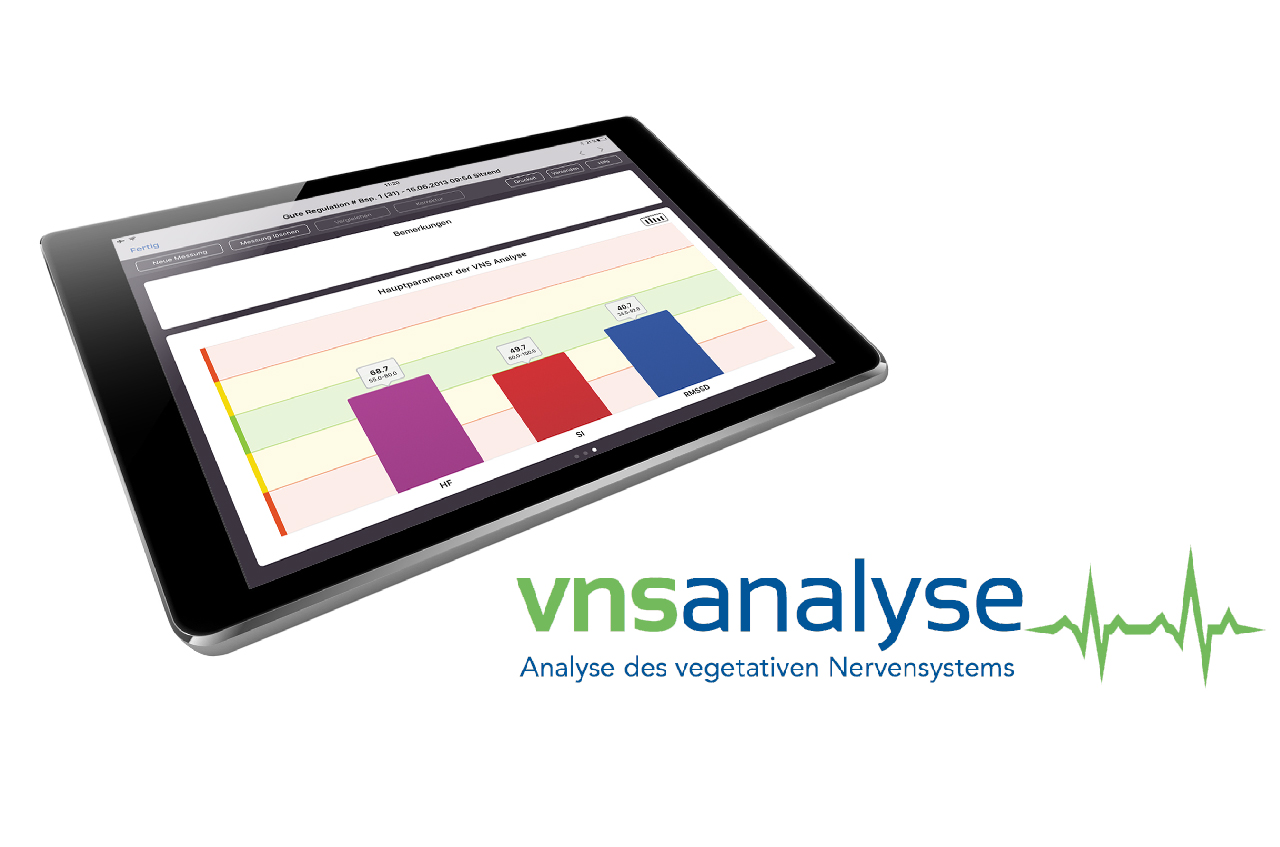Heart rate variability measurement (HRV)
The heart rate variability measurement shows us how well our autonomic nervous system is set up. Our autonomic nervous system consists roughly of two parts – the sympathetic nervous system (tension) and the parasympathetic nervous system (relaxation). The autonomic nervous system should be seen as a higher-level control center that uses nerves to control and regulate processes and functions in the body – more precisely: our organs and organ systems – and at best keeps them in a certain balance.
These processes and functions include
breathing
blood pressure
heart rate
digestion
the immune system
the hormone system
our sensory organs
and much more.
With the heart rate variability measurement, we measure the parasympathetic and sympathetic nervous system via the heart and thus obtain a statement about the vegetative nervous system. The heart rate variability measurement measures from heartbeat to heartbeat. After the measurement, various graphical evaluations allow you to easily and clearly recognize the state of the vegetative nervous system.
For example, you can see in the graphical representations whether the person is in “permanent tension” (sympathetic tone), which means that they are exposed to quasi-permanent stress – whether internal or external – and are unable to react flexibly to it. You could say that they are in a state of permanent stress, a kind of rigidity or inability to act.
At best, one can read from the graphical representations that the vegetative nervous system is well regulated, that it is balanced and that both the sympathetic and parasympathetic nervous systems react alternately when needed or required. This person is usually flexible in their actions and thoughts and tends to be a “relaxed” person who can also “rest” well in between, but can also react well to acute stress reactions.

In addition, there are two special constellations in the graphical representations that serve as an indication that the patient may be exposed to a certain cardiovascular risk. This is sometimes the result of a person being exposed to a certain amount of stress for a very long time and the system eventually “goes into a weak state”. This is not the case for everyone.
Procedure
In my practice I use the vns analysis. During a measurement, the patient is fitted with a measuring belt around the chest and this is connected via Bluetooth to software on the Ipad.
There are different types of heart rate variability measurement. The first test takes approx. 7 minutes. The patient sits quietly during the test, does not speak or move, simply breathes calmly while the belt takes its measurement. After 7 minutes there is a small beep and the first measurement is over.
If the first measurement shows that your sympathetic nervous system is too active, we will take a second measurement, which this time lasts approx. 2-3 minutes and in which you as the patient follow a special inhalation and exhalation that the software will give you on the Ipad. This involves much deeper breathing, which is generally intended to activate the parasympathetic nervous system.
Afterwards, we discuss the results of the measurements.

Make an appointment now!
Would you like to test how stressed you are and how well your body can actually cope with stress at the moment?
Together we will see how you are doing. We test how your body reacts to stress and whether your body is currently still able to regulate itself or whether it already has problems with regulation and is possibly just compensating.
This test also serves as a preventive examination for you – here we can see at an early stage whether something is going in the wrong direction!


Leave A Comment